The Senchado Tea Ceremony at the hidden Jusyouin Temple offers visitors a chance to enjoy Japan’s rich cultural legacy. Tucked away within the historic Myoshinji Temple complex in Kyoto, this serene setting provides the perfect backdrop for exploring the elegant art of traditional tea drinking. Guided by a skilled tea master, participants learn the intricate etiquette and symbolism behind this centuries-old practice, all while surrounded by the tranquil beauty of a 400-year-old garden. More than just a tea ceremony, this experience connects attendees to the spiritual heritage that has long shaped the Japanese way of life. What secrets might this hidden temple hold, and what profound insights await those who venture to discover them?
Key Points
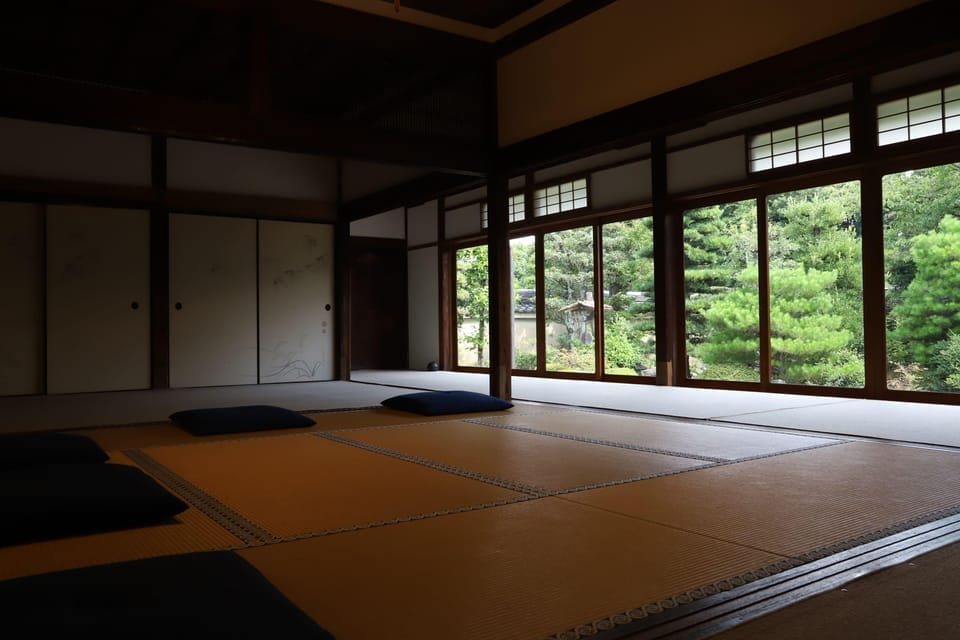
- The Senchado Tea Ceremony takes place at the serene Jusyouin within the expansive Myoshinji Temple complex in Kyoto, Japan.
- Participants enjoy the 400-year-old Japanese tea culture, including stories of the influential general Ishida Mitsunari.
- The ceremony features a guided tour, bowing etiquette, and seasonal tea and sweets tasting led by a certified tea master.
- The tranquil Japanese garden within the temple complex enhances the meditative and authentic experience of the ceremony.
- The ceremony operates rain or shine, providing a consistent experience, and can be booked through various online channels.
Overview of the Senchado Tea Ceremony

Experience a traditional Japanese tea ceremony at Jusyouin, a pagoda temple within Myoshinji Temple, the largest Zen temple in Kyoto with 46 pagoda temples.
Enjoy tea and sweets prepared by a senchado-trained tea master in a serene environment, featuring a beautiful Japanese garden with a 400-year history.
The ceremony lasts 1 hour and accommodates small groups limited to 5 participants. Guests will learn about the temple’s history, tea ceremony manners, and engage in the art of bowing and elegant tea drinking.
The unique atmosphere immerses visitors in the traditions of Japanese tea culture, including historical stories about Ishida Mitsunari, a general who loved sencha.
You can also read our reviews of more tours and experiences in Kyoto.
Booking and Cancellation Policy
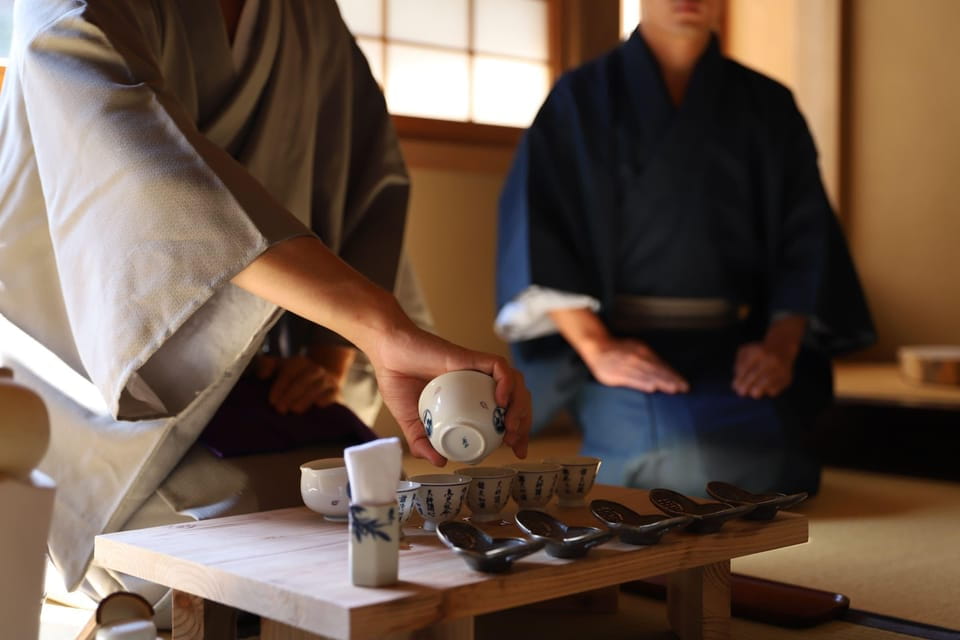
For those interested in attending the Senchado Tea Ceremony, the price starts from $41.68 per person.
There’s no need to pay upfront, as you can reserve your spot and pay later. If plans change, you can cancel up to 24 hours in advance for a full refund.
- The ceremony is available at various starting times, so you can check availability to find the best fit.
- It’s a rain-or-shine event, so you don’t have to worry about the weather.
- For any inquiries or assistance during your stay in Japan, reach out to the organizers through their Instagram accounts.
- The meeting point is the South Gate of Myoshinji Temple, which you can find using the provided Google Maps link.
Experience Details and Itinerary
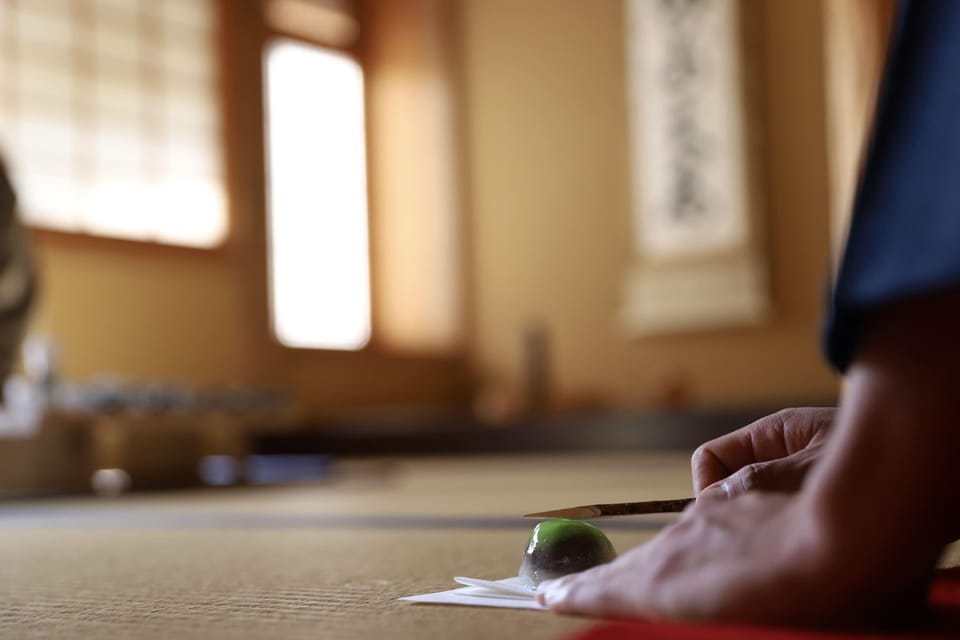
The Senchado Tea Ceremony takes place at Jusyouin, a pagoda temple within the expansive Myoshinji Temple complex, the largest Zen temple in Kyoto with 46 pagoda temples.
The ceremony begins with a guided tour, where participants learn about the temple’s history. They then engage in the art of bowing and elegant tea drinking, experiencing the serene atmosphere of the Japanese tea ritual.
The ceremony includes a tea and sweets tasting, selected by a certified Japanese tea instructor to match the season.
Throughout the experience, participants have the opportunity to meditate in the temple’s beautiful Japanese garden, which boasts a 400-year history.
Highlights of the Ceremony
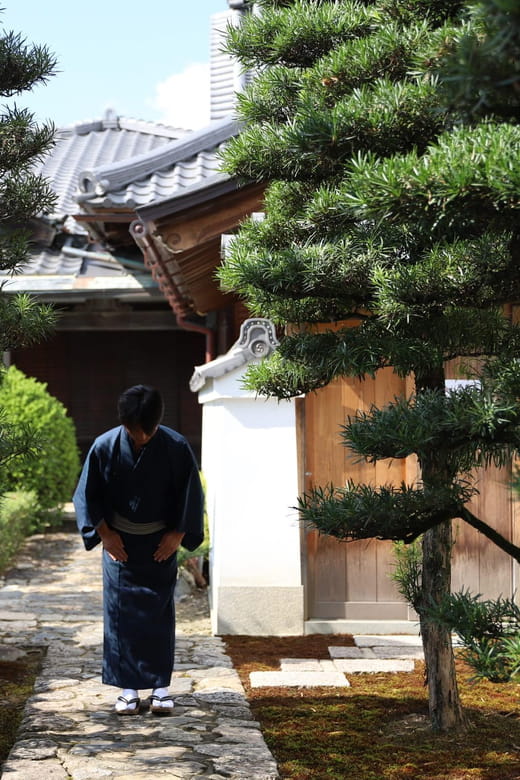
A key highlight of the Senchado Tea Ceremony is the direct hospitality from a trained tea person. They carefully select seasonal tea and sweets, providing an authentic and immersive experience.
The ceremony also offers:
- Beautiful photography opportunities with a DLSR camera, capturing lasting memories of the event.
- A unique atmosphere steeped in history, including stories about Ishida Mitsunari, a general who loved sencha tea.
- The chance to engage in the art of bowing and elegant tea drinking, learning proper manners.
- A serene environment within the 400-year-old Japanese garden of Jusyouin, a pagoda temple in the Myoshinji complex.
Important Information and Contact
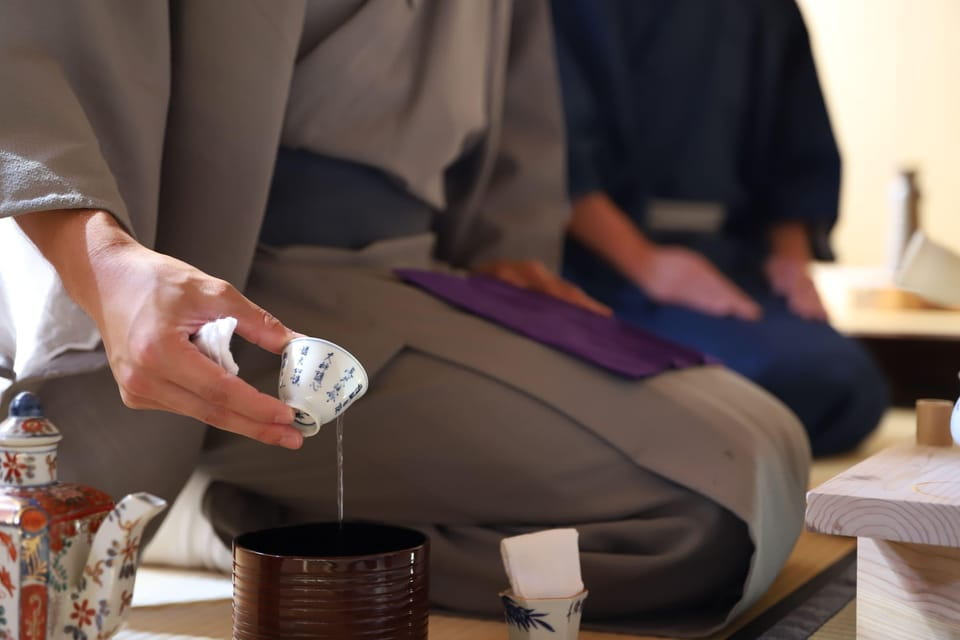
The Senchado Tea Ceremony operates rain or shine, ensuring participants can enjoy the experience regardless of weather conditions.
For inquiries or assistance during their stay in Japan, visitors can reach out to the ceremony organizers via their tourism account on Instagram, @den.eiexperience, or their Japanese tea brand, @reijp.
The meeting point for the ceremony is the South Gate of Myoshinji Temple, which is provided via a Google Maps link.
With these details in mind, tea enthusiasts can plan their visit with confidence, knowing they’ll have the necessary information to fully enjoy this traditional Japanese tea ceremony.
- Kyoto: Pagoda Doro, Bamboo, Kiyomizu, Geisha (Italian)
- Inside of Fushimi Inari – Exploring and Lunch With Locals
- Kyoto: Must-See Spots to Visit, Kyoto One Day Private Tour
- Kyoto Sake Bar and Pub Crawl (Food & Sake Tour)
- Osaka City To/From Kyoto City Private Transfer
- Kyoto: Japanese Washoku Bento Cooking Class With Lunch
Temple History and Significance
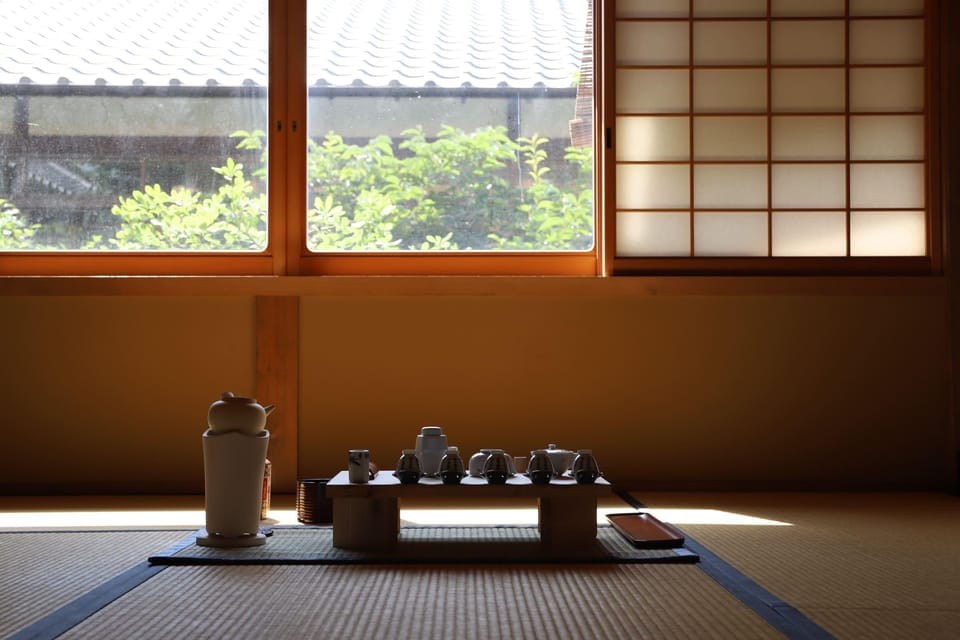
Myoshinji Temple, the largest Zen temple in Kyoto, boasts a rich history spanning over 46 pagoda temples. Founded in 1342, this revered complex has played a significant role in Japan’s spiritual and cultural heritage.
Within its verdant grounds, the Jusyouin pagoda stands out, housing the traditional tea ceremony experience. This 400-year-old temple is steeped in fascinating stories, including:
- Its connection to Ishida Mitsunari, a renowned general who cherished the art of sencha tea
- The tranquil Japanese garden, meticulously maintained to evoke a sense of serenity
- The architectural marvel of the pagoda, a testament to the temple’s enduring legacy
- The temple’s role as a hub for Zen Buddhist practices and the cultivation of mindfulness.
Guided Tour and Cultural Insights
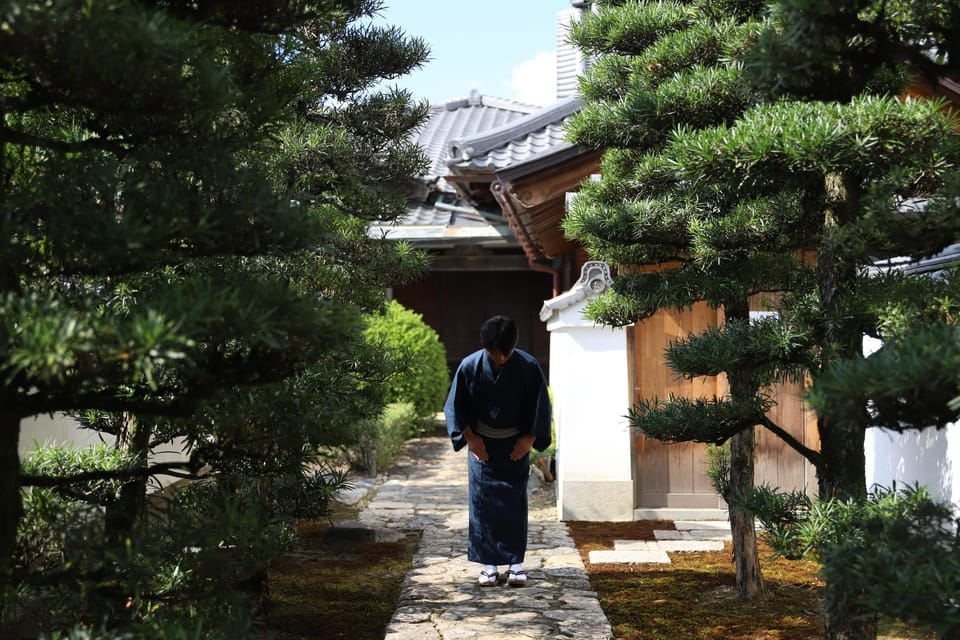
As guests step through the South Gate of Myoshinji Temple, they embark on a guided journey that unveils the captivating cultural and historical nuances of this revered Zen complex. The tea master leads participants on an insightful tour, sharing stories about the temple’s 400-year heritage and the legendary figures who walked these grounds. Guests learn the proper etiquette for the tea ceremony, including the art of bowing and elegant tea drinking. Throughout the experience, they’re invited to engage in meditation, appreciating the serene Japanese garden that sets the stage for their immersion in traditional Japanese culture.
| Guided Tour | Cultural Insights | Hands-on Experience |
|---|---|---|
| Temple history and significance | Proper tea ceremony manners | Bowing and tea drinking techniques |
| Stories of historical figures | Meditation in the garden | Seasonal tea and sweets tasting |
| Captivating Zen atmosphere | Insights into Japanese traditions | Engaging with a certified tea master |
Tea Ceremony Etiquette and Traditions
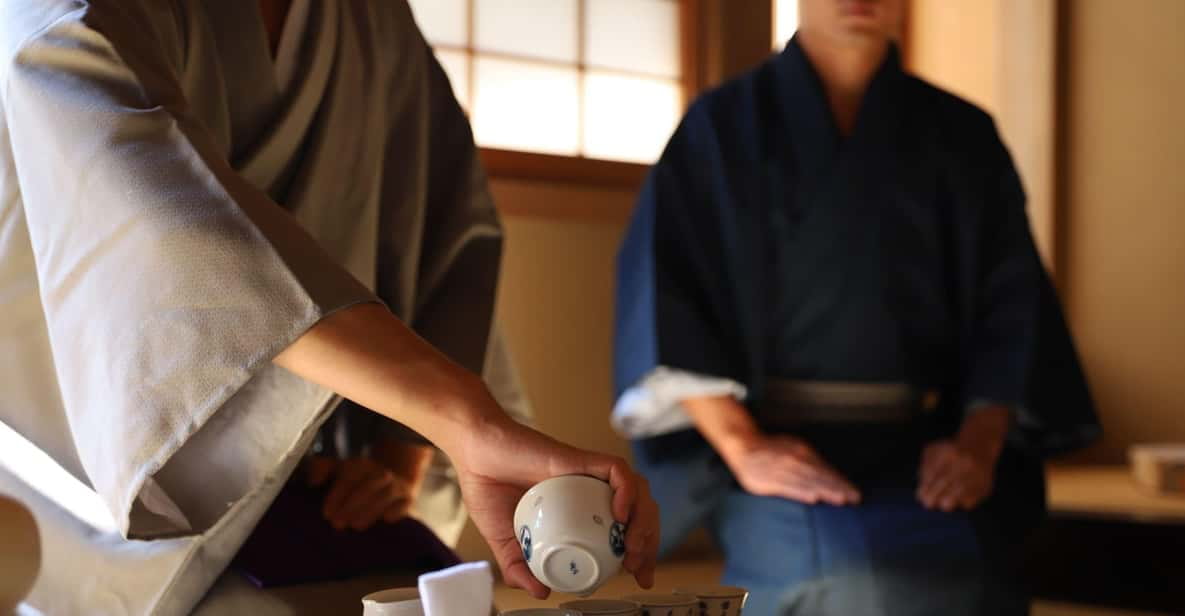
Within the tranquil setting of Myoshinji Temple, guests enjoy the timeless traditions of the senchado tea ceremony.
Led by a skilled tea master, participants learn the intricate etiquette and reverence involved in this cultural practice. From the graceful movements of preparing the tea to the elegant serving of seasonal sweets, every step is infused with purposeful elegance.
Guests gain insight into:
- The significance of bowing and hand gestures
- The importance of mindfulness and focus during the ritual
- The symbolism behind the shapes and colors of the tea utensils
- The history and philosophy that underpins the tea ceremony tradition
This immersive experience allows visitors to connect deeply with the essence of Japanese culture.
Frequently Asked Questions
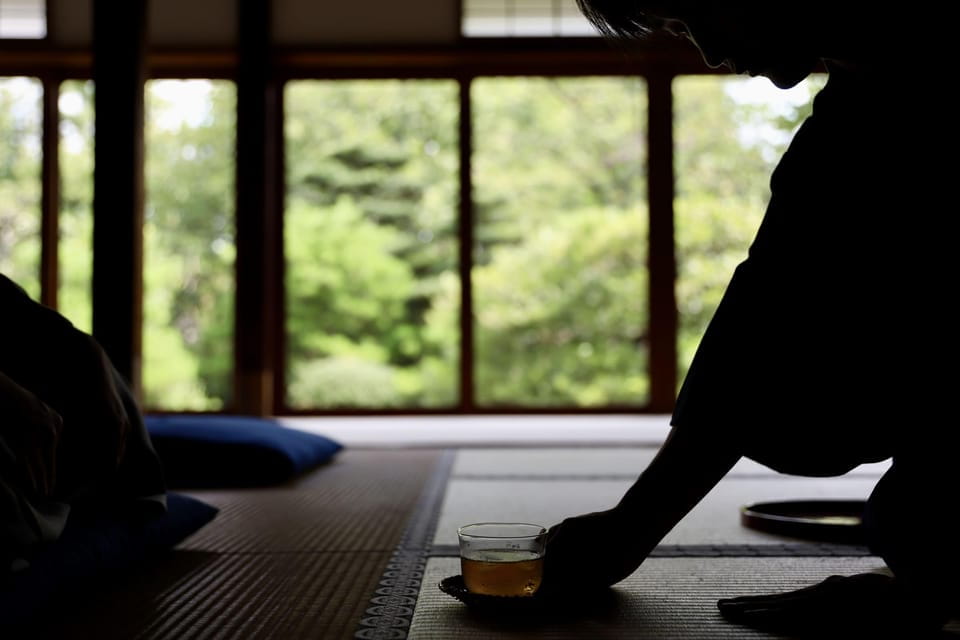
How Long Does It Take to Reach the Temple From the City Center?
The temple is located about 4 miles from the city center, and the journey typically takes around 30 minutes by public transportation. Visitors can expect a straightforward commute to this serene Zen temple and tea ceremony experience.
Is the Tea Ceremony Suitable for Children?
The tea ceremony is likely not suitable for young children. It requires quiet contemplation and precise movements that may be difficult for kids to fully appreciate. However, older children interested in Japanese culture could potentially enjoy the experience with proper preparation and guidance.
Can I Take Home the Tea and Sweets Served During the Ceremony?
Unfortunately, participants cannot take home the tea and sweets served during the tea ceremony. The tea and sweets are an integral part of the experience, and they’re meant to be enjoyed on-site as part of the traditional ceremony.
What Is the Dress Code for Attending the Tea Ceremony?
There’s no strict dress code, but participants should wear neat, conservative attire. Casual wear like jeans and t-shirts is generally acceptable, though people often opt for more formal Japanese-style clothing to enhance the traditional tea ceremony experience.
Are There Any Special Accommodations for Guests With Disabilities?
The tea ceremony accommodates guests with disabilities, offering assistance as needed. They work to ensure all participants can fully engage with the ceremony and its serene atmosphere, regardless of any special needs.
Recap
Immersing oneself in the Senchado Tea Ceremony at the historic Jusyouin Temple offers a profoundly transformative experience. Through the skilled guidance of a tea master, participants gain a deeper appreciation for Japan’s rich cultural heritage and the meditative practice of tea drinking. Surrounded by the temple’s serene 400-year-old garden, the ceremony embodies the essence of mindfulness, respect, and the enduring traditions that have shaped Japan’s spiritual identity.
More Tour Reviews in Kyoto
- Tour by Car With a Kyoto Native Away off Touristy|A Local Show You Secret Places
- Osaka or Kyoto Private Day Tour With English Driver Free Pickup
- Kyoto Millennium Shogun E-Bike Cycling Tour (East Course)
- Pedal Adventure Kyoto E-Bike Tour : True Kyoto Avoid the Crowds
- Authentic Kyoto Cuisine Tour With a Local Guide
- Private Guided Local Bar Crawl Experience in Kyoto
Not for you? Here's more things to do in Kyoto we have recnetly reviewed
- Tea Ceremony & Zen Meditation in Kyoto Samurai House(Mixed Group)
- Gion a Half Day Food Tour Designed for You With a Local Guide
- Matcha Making Experience in Kyoto
- F1 Japanese Grand Prix JR Chartered Train Departing From Kyoto
- Skip the Lines Basic Ticket at SAMURAI NINJA MUSEUM KYOTO
- Photo Shoot With a Private Vacation Photographer in KYOTO, JAPAN
- Kamo River’s Timeless Tales: A Self-Guided Audio Tour in Kyoto
- The Beauty of Kyoto – Historical Walking Tour of Higashiyama Area
- Japanese Cooking Class
- Arashiyama Bamboo & Must See Gardens With an Amazing Guide
- Kyoto-The City of the Dreams!
- Kyoto Custom Highlight: Private Walking Tour With Licensed Guide
